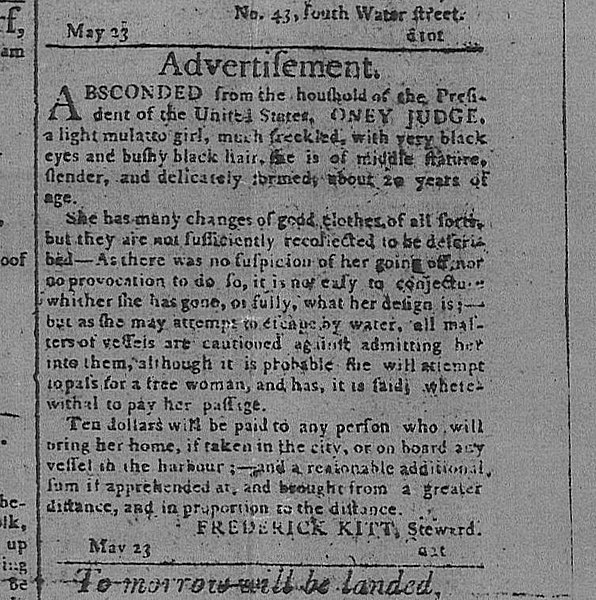President's House (Philadelphia)
The President's House in Philadelphia was the third U.S. Presidential Mansion. George Washington occupied it from November 27, 1790, to March 10, 1797, and John Adams occupied it from March 21, 1797, to May 30, 1800.
Third Presidential Mansion, occupied by George Washington, November 1790–March 1797 and by John Adams, March 1797–May 1800.
Mellon Collection, National Gallery of Art "The Washington Family" by Edward Savage, painted between 1789 and 1796, shows (from left to right): George Washington Parke Custis, George Washington, Nelly Custis, Martha Washington, and an enslaved servant (probably William Lee or Christopher Sheels).
A 1796 runaway advertisement for Oney Judge, one of nine slaves held by Washington at the Philadelphia President's House
The icehouse pit was excavated in December 2000, and reburied beneath the Liberty Bell Center.
Robert Morris (financier)
Robert Morris Jr. was an English-American merchant and a Founding Father of the United States. He served as a member of the Pennsylvania legislature, the Second Continental Congress, and the United States Senate, and he was a signer of the Declaration of Independence, the Articles of Confederation, and the United States Constitution. From 1781 to 1784, he served as the Superintendent of Finance of the United States, becoming known as the "Financier of the Revolution." Along with Alexander Hamilton and Albert Gallatin, he is widely regarded as one of the founders of the financial system of the United States.
Portrait of Robert Morris, c. 1782, by Charles Willson Peale
An engraving by Ole Erekson, c. 1876, of Robert Morris
Mary Morris, Robert Morris's wife portrait by Charles Wilson Peale
Robert Morris portrait by Robert Edge Pine








